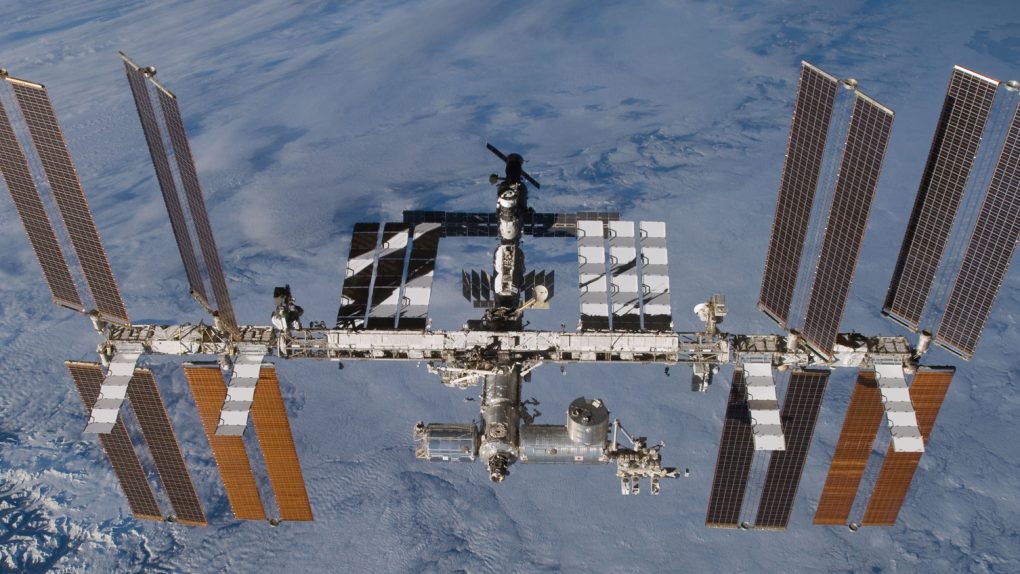The International Space Station is a massive laboratory that has produced some incredible scientific discoveries over the past couple of decades. It’s been manned on a continuous basis for the majority of that time, and while that’s awesome for science, it also means that the space station produces a steady supply of trash as well. Now, following upgrades of the space station’s external batteries, the ISS just dumped its biggest piece of space trash ever.
As Spaceflight Now reports, a huge pallet packed with 2.9 tons of old batteries was recently dumped by the space station. Those batteries served as the life-force of the space station when it entered the shadow of the Earth, shrouding its solar array in darkness. For several months now, astronauts have been conducting spacewalks to upgrade those aging batteries with new, more efficient models, and the old batteries had to end up somewhere.
The cargo pallet is big and it weighs a whole lot, but that doesn’t mean it’ll be tumbling down to the surface of our planet any time soon. Depending on a variety of factors, it will take anywhere from two to four years before the orbit of the pallet degrades to the point that it enters Earth’s atmosphere. When that happens, the pallet and the batteries packed onto it will burn up completely, NASA says.
“Mission controllers in Houston commanded the Canadarm2 robotic arm to release an external pallet loaded with old nickel-hydrogen batteries into Earth orbit on Thursday morning,” NASA explains in a blog post. “It is safely moving away from the station and will orbit Earth between two to four years before burning up harmlessly in the atmosphere.”
The intense friction that objects experience when entering Earth’s atmosphere leads them to heat up dramatically and, in many cases, the inferno essentially vaporizes them, leaving nothing behind. Based on what NASA is saying about this pallet of batteries, it sounds like that’s exactly what will happen to the discarded gadgets.
The new batteries that spacewalking astronauts have been installing over the course of several months are significantly more efficient than the old nickel-hydrogen models that are now orbiting Earth as space junk. The new batteries can hold significantly more power than their predecessors and will provide the space station and its inhabitants with a steady supply of power whenever the solar arrays can’t send power directly to whatever needs it.
Space junk is definitely a concern for NASA and other space agencies around the world. The bundle of old batteries the ISS just released is the largest piece of space junk the space station has ever generated. Most of its trash is loaded on cargo vehicles that are released and burn up in Earth’s atmosphere as well.








